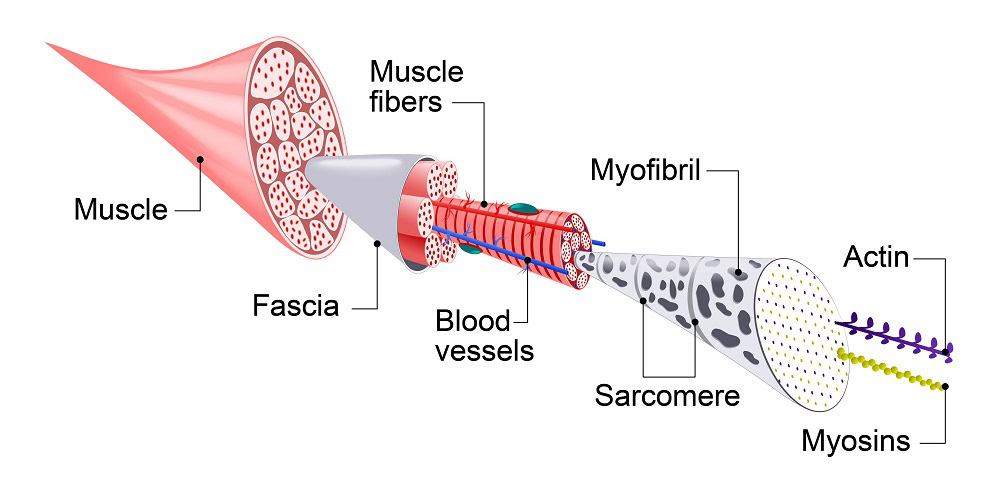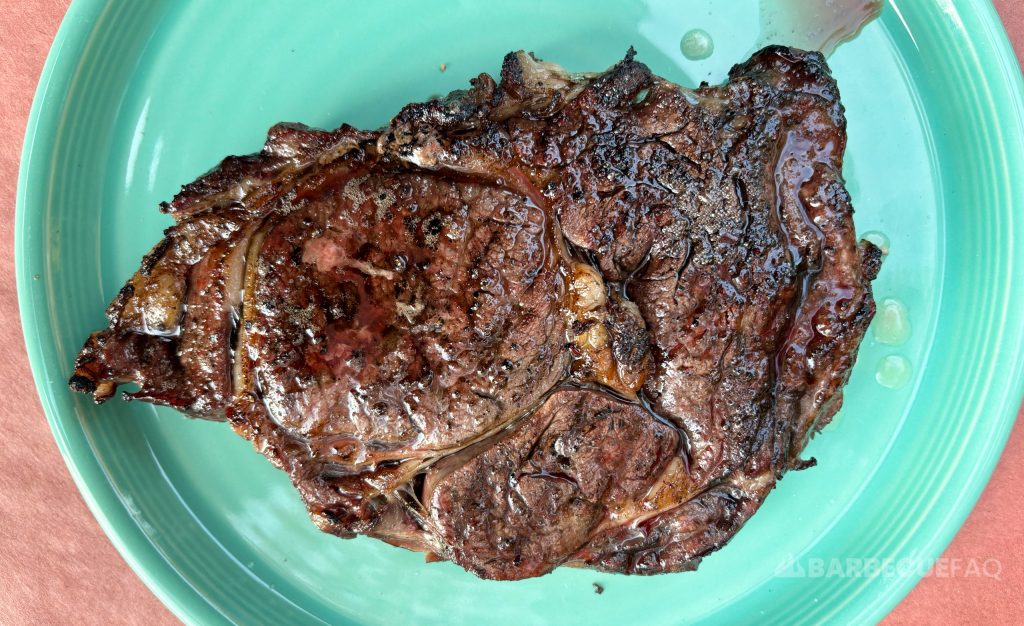By Dylan Clay
It’s said that resting steak is an important part of the cooking process. However, the opinions on this topic are by and large, split.
The rest time of steak or meat in general is dependent on size, cut, and personal taste preferences. People who rest their steak will provide the hard and fast answer of 5 minutes per inch of thickness. For instance, a standard ribeye is 1-1.5 inches thick resulting in an estimated rest time of 5-7 minutes.
The reason people rest steak is to allow the meat to “reabsorb” and “redistribute” the juices. When meat – a more optimal word would be muscles – are cooked, a number of things happen.
Note: For some reason people throw around words like “reabsorb” and “redistribute” yet assume that meat can’t absorb juices if you don’t rest it/slice into it?
Truth be told, “searing” does nothing to create an impenetrable surface or “lock in” juices.
To help understand what’s happening, we need to understand the anatomy of the muscle and it’s composition.
Muscle tissues are comprised of bundles of cells called muscle fibers that are bound together with connective tissue.
More specifically muscle fibers are grouped into muscle bundles composed of myofibrils. Myofibrils are composed of proteins actin, myosin, and others – collectively called myofibrillar proteins. Myosin and actin are involved in muscle contraction and relaxation.

The fiber bundles are surrounded by collagen fibers and an elastic connective tissue called “silver-skin” or epimysium which separates muscle groups.
Collagen is the most abundant protein found in mammals. The primary purpose of collagen is to provide support and strength. As collagen fibrils are heated, they start to shrink which results in fluid loss. After certain temperatures, collagen starts to break-down where-as elastin does not and should be removed.
Muscles contain roughly 60-70% moisture (water), 10-20% protein, and 2-22% fat. Most of this water is contained between the filaments that make-up the muscle fibers.
Juiciness is the amount of meat juice that is released when you bite into a piece of meat. The more free moisture, the juicier the meat will be. As you cook meat, the temperature goes up. As the temperature reaches 105 F, the proteins begin the denaturing process.
The protein molecules in meat are wound up in coils. When meat is heated, these bonds break and the molecules unwind. Heat also causes the muscle fibers to shrink as moisture is squeezed out and the molecules recombine (coagulate).
This entire process is referred to as denaturing – breaking, unwinding, and coagulating.
As meat continues to increase in temperature, more water is pushed out. At 120F the protein myosin begins to coagulate and connective tissues begin to break down. At 135 – 140 F, the sheaths begin to shrink which causes the fibers to shrink.
Below 140F the meat is tenderizing more than it’s contracting meaning less moisture loss. This is the main reason that it’s recommended to cook steak to medium rare / medium.
After 140F the contraction speeds up meaning the meat will be drier. The same could be said for temperatures 150F and 160F. However, after 160 F, the collagen starts to break down quite rapidly which further squeezes out moisture and creates gelatin. At 180F collagen is fully dissolved but is considered “drier” due to moisture loss. This dry meat is considered more tender since the gelatin adds succulence.
Resting steak is as simple as leaving it on a plate to stand.

Truth be told, you likely already rest steak before serving. Most people who are cooking steak for dinner are doing so for a family gathering. Meaning you have to gather everyone, set the table, wait for other food to finish, etc.
Noted above, most people who rest steak recommend a 5 minute rest time per inch of thickness; The above process is likely going to take you five minutes.
The main thing to keep in mind when resting is that if you have a specific “doneness” like medium-rare, depending on how you decide to rest the steak it could have a negative impact on doneness and the crust.
For instance, a lot of resources will till tell you to wrap the steak and/or plate with an aluminum foil tent. Wrapping in this manner can do a few things, namely ruin the crust via moisture accumulation and cause carry-over cooking.
Carry-over cooking occurs because the outer surface area is hottest. When resting, the hotter surface area will carry-over to the center and increase the internal temperature by 5 – 15 F.
Resting with foil traps steam which will causes the crust to go to mush.
I considered doing this experiment on my own, and likely still will. However, there have been so many food scientists and Chefs that have looked at this phenomenon:
You get the point. There are other sources that look at the juice loss. All of them report the same findings – There is less juice loss but carry-over and crust degradation occur.
